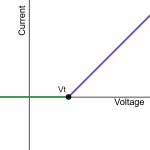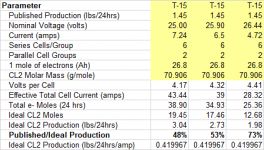jmastron
LifeTime Supporter
In previous posts it was mentioned that splash out will lower salt levels. I know evaporation will increase salt levels and dilution will reduce levels. I wouldn't think splash out would change anything.
It's not the splashout itself that lowers levels; it's adding unsalted water to replace the splashout that dilutes/reduces the salt level. Same with rain-induced draining, backwashing, etc where you replace water.
IRight, but the chloride ions go somewhere, or else the pool would continuously increase in chloride saturation.
As I understand, CYA can bind to chloride ions so whatever process causes them to leech from the water doesn't occur, but what actually is the process it's preventing? Do the positive and negative chlorine ions in the water reform into chlorine gas if CYA isn't there and UV light acts as a catalyst?
As others have said (much more scientifically), that's exactly what happens. I've been using liquid chlorine since we bought the house in 2014. In December 2016 I bought a K1766 test kit and measured the salt level at 1600ppm. I recall testing occasionally since then at higher levels (~1900-2000 ppm a couple years later) but didn't write the values down. This summer I bought and SWCG and tested the sale level -- 2400 ppm. Using Pool Math that actually matches what adding 86 gallons of liquid chlorine should do. I've used more than that, but accounting for winter rain drain (no summer rain here), splashout, etc, that seems in the ballpark. I only had to add 4 bags to get to 3500ppm and make the cell happy.



